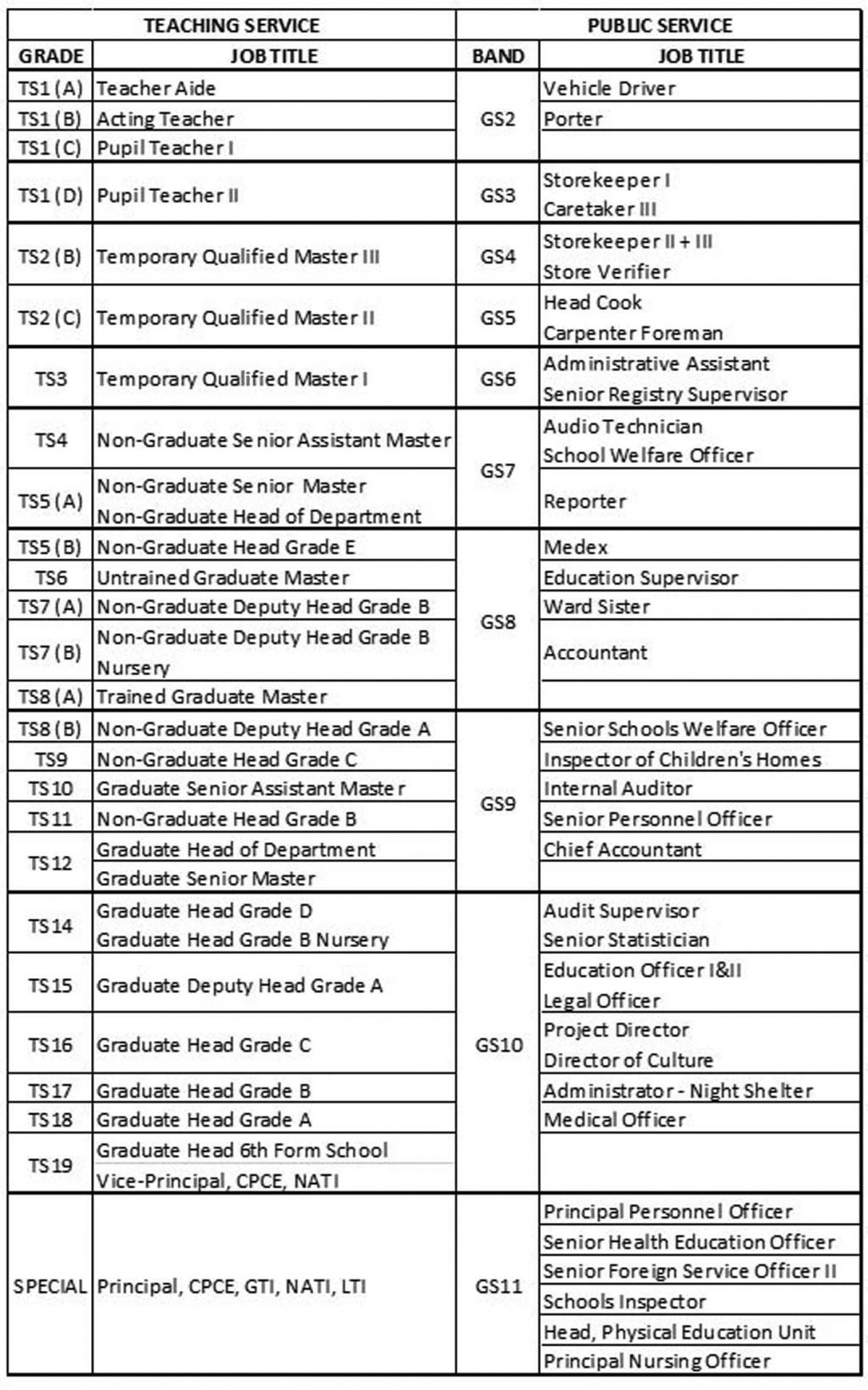Dear Editor,
The following is in response to a number of enquirers who all made the point that it was not enough to contrast salaries between the Teaching Service and the Public Service, but that they would be better informed if they could have some insight of what jobs were included in the comparable scales which SN was gracious enough to publish in its edition. One therefore sincerely hopes that accommodation could be provided for the Table below which has been abbreviated, in recognition of the limited space available as a consequence, so far it was reasonable it had to be restricted to a sampling of jobs in both constructs. In the process it is just possible that some Public Servants may find their internal comparabilities somewhat provo-cative, and must therefore wonder what consistent criteria would have been utilised for measuring the value of their respective jobs.
The one deficit these two groups of government employees could justifiably complain of is being made pensionable at age 55 years – a legacy from the colonial past. Guyana is in fact the only country in the world where these Government employees are required to retire under the age of sixty. What a loss of experienced skills and institutional memory! The contradiction is that those who are employed on contract can continue to work well after the official retirement age, while enjoying gratuity every six months at the rate of 22.5% of monthly salary. Apart from the eleven constitutional agencies depicted in the Budget, the employee population in the Public Service constitutes of the following:
 Hopefully the Table below is worth sharing.
Hopefully the Table below is worth sharing.
E.B John\


